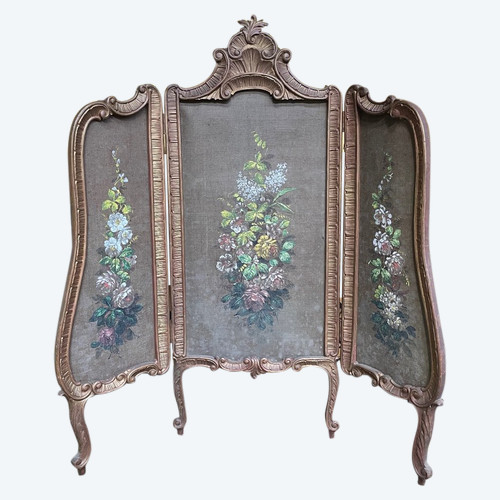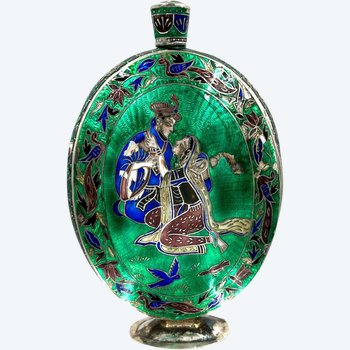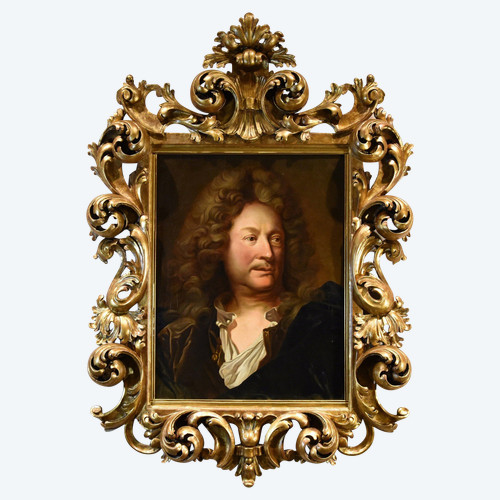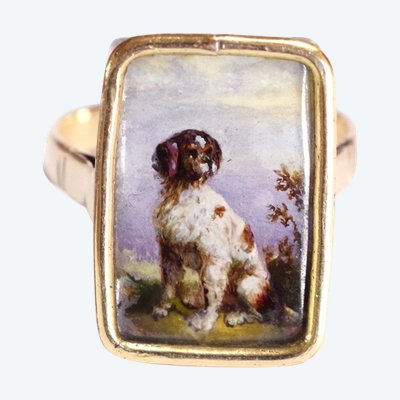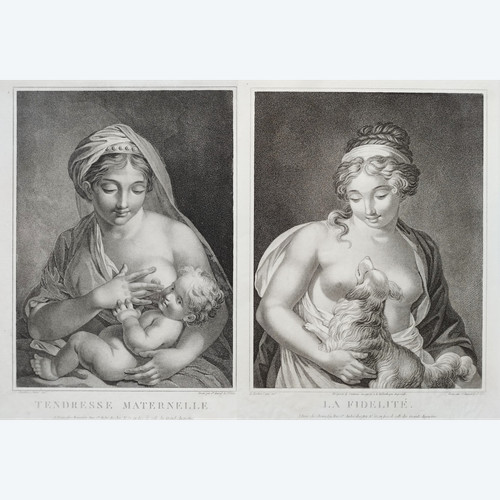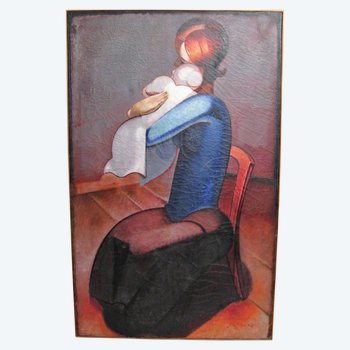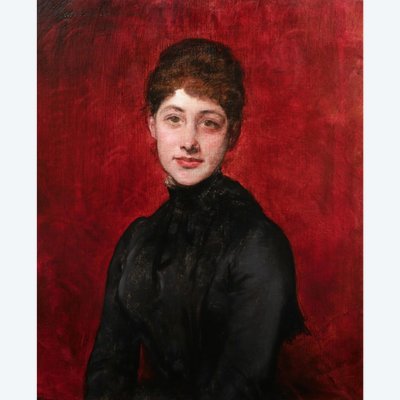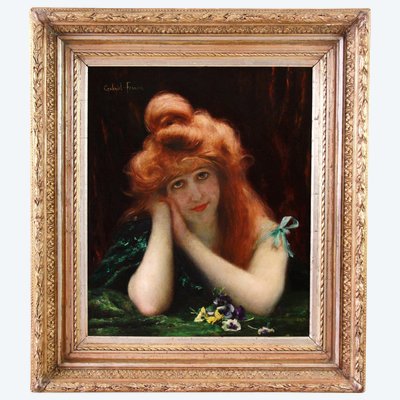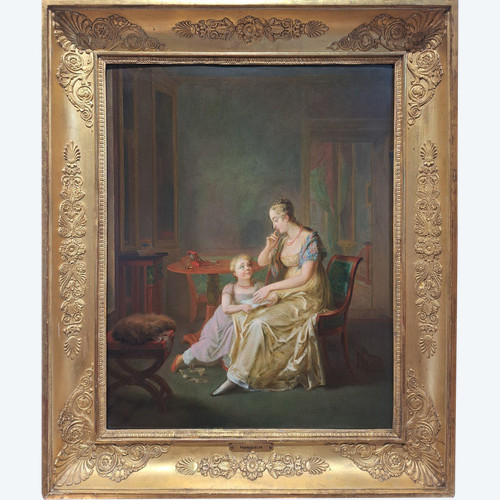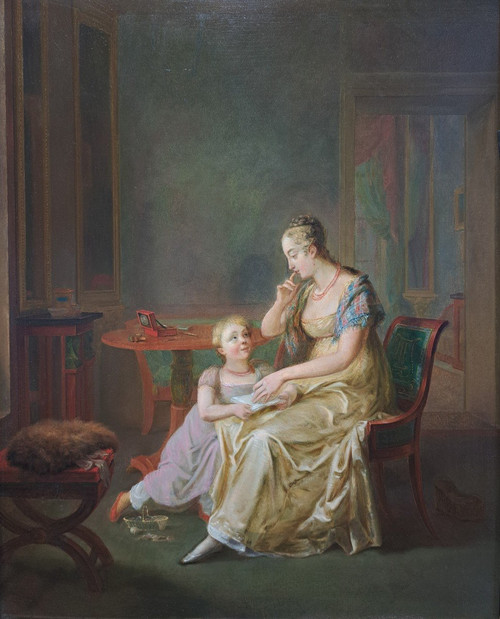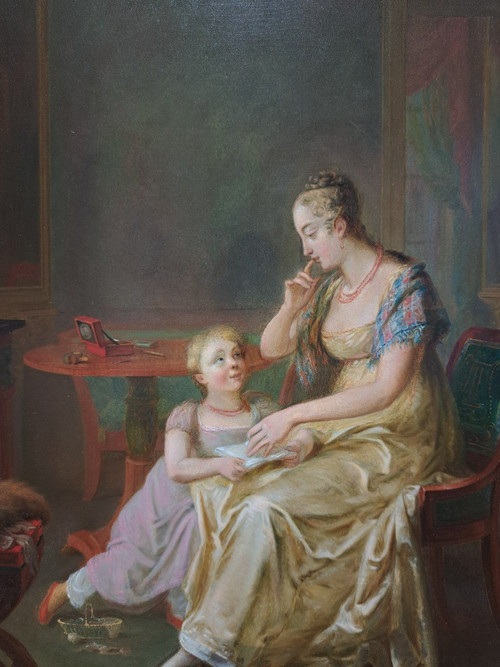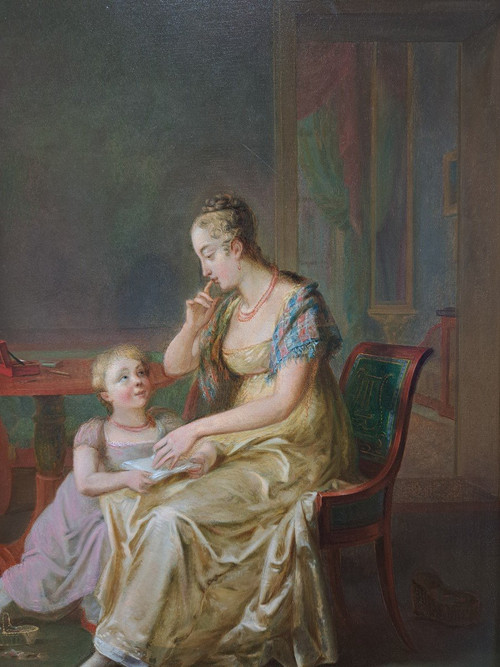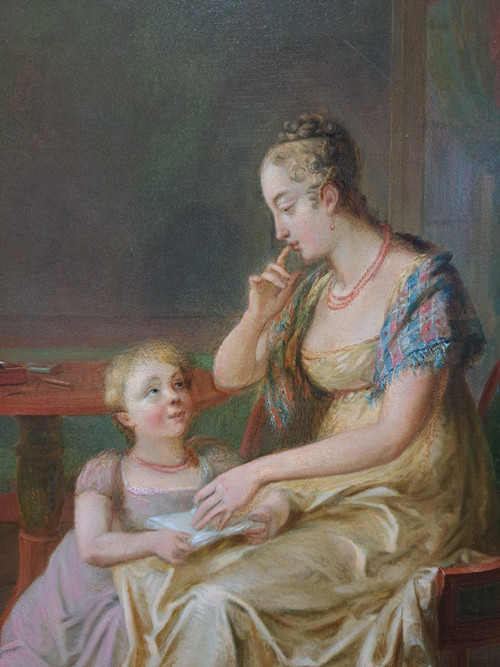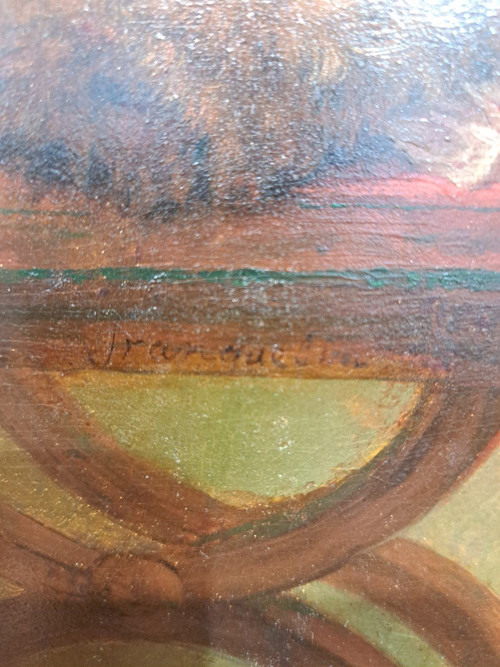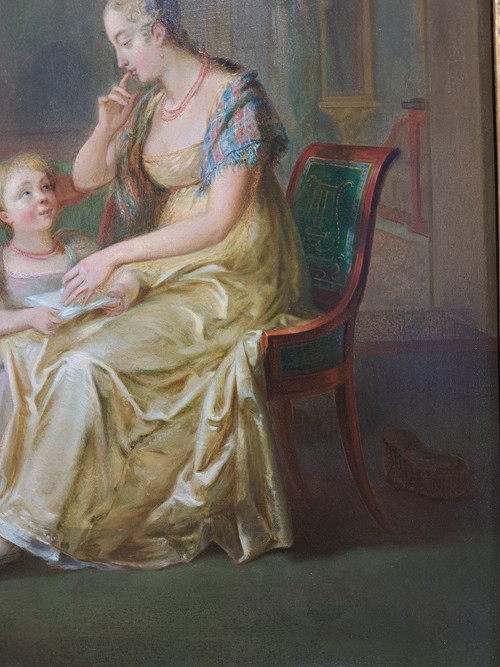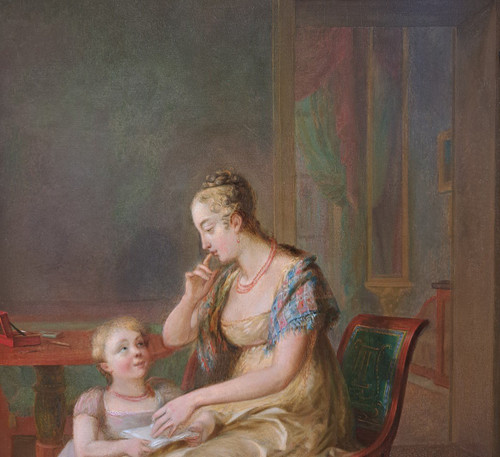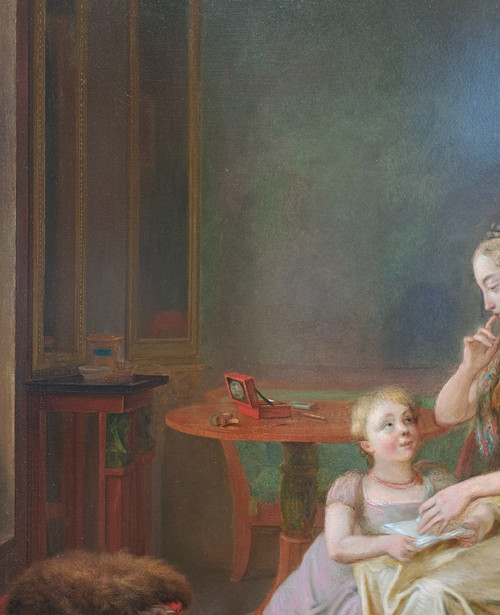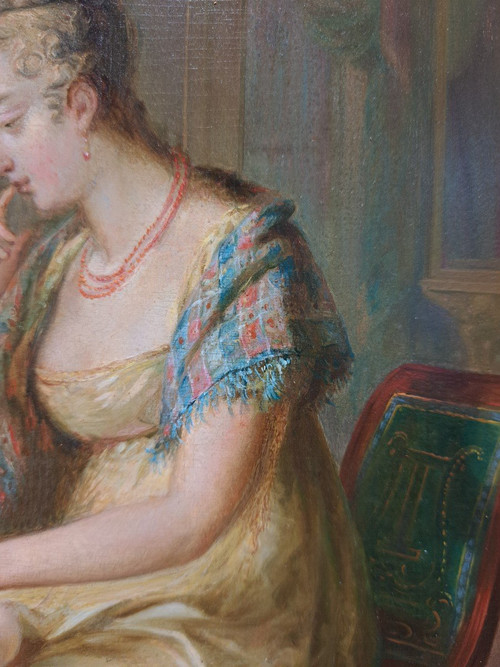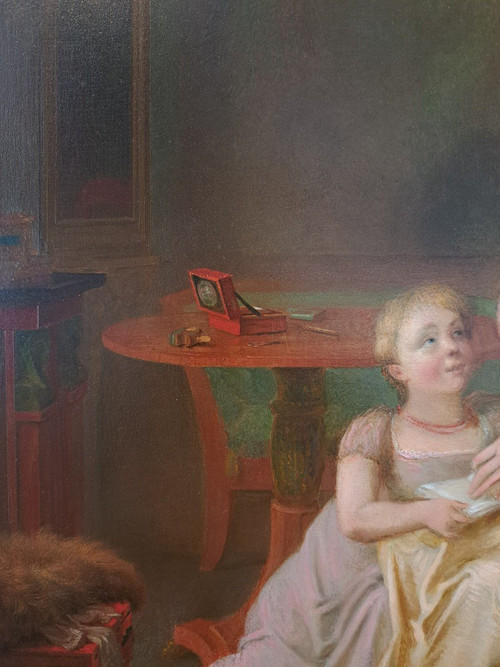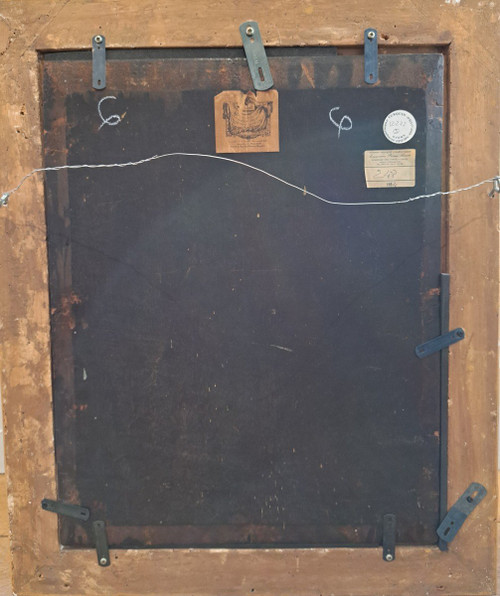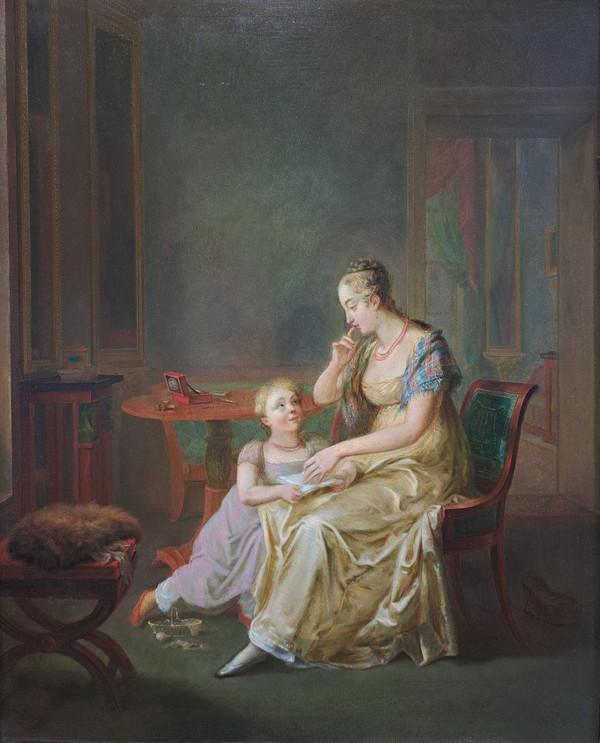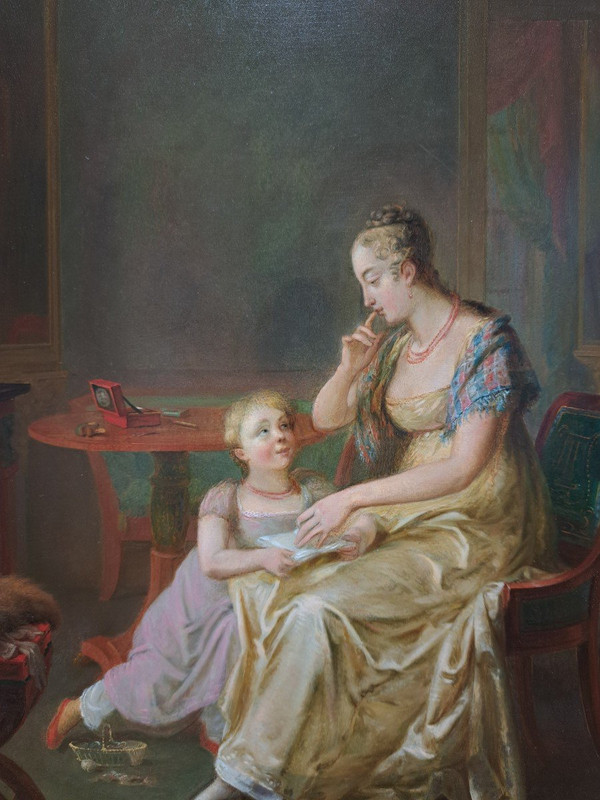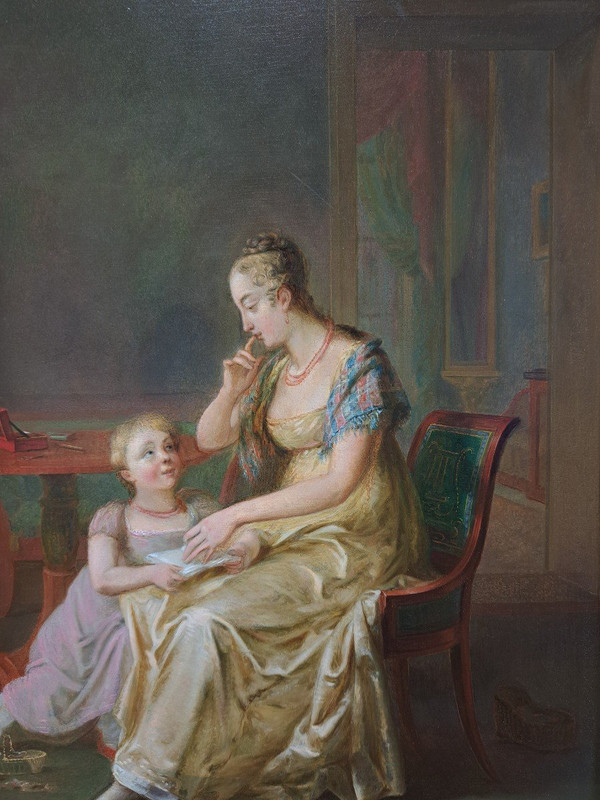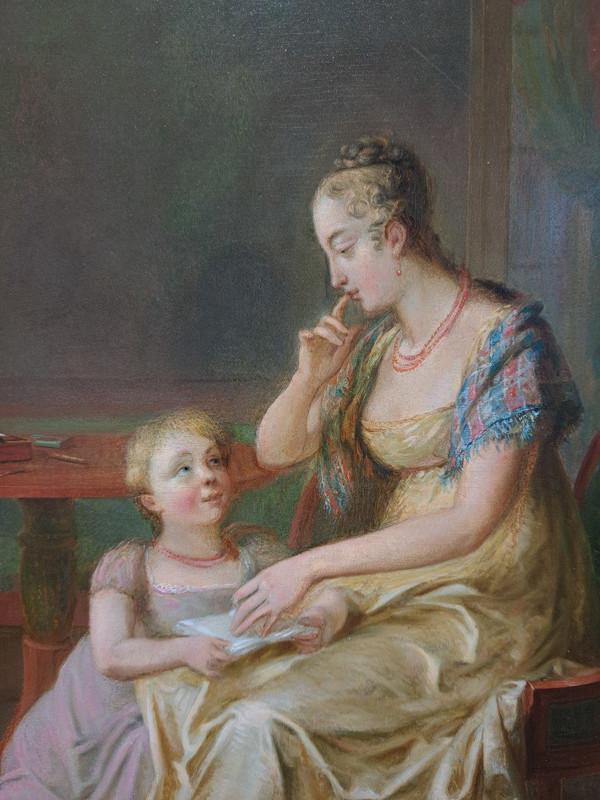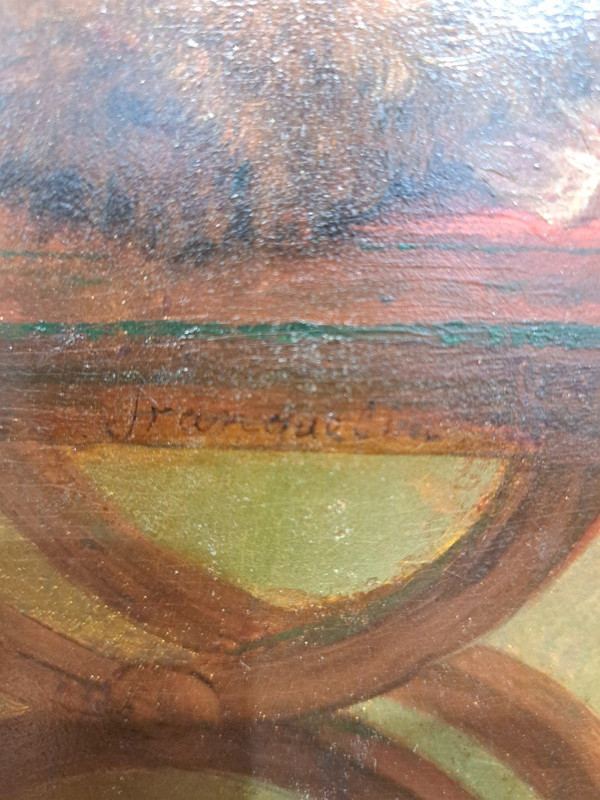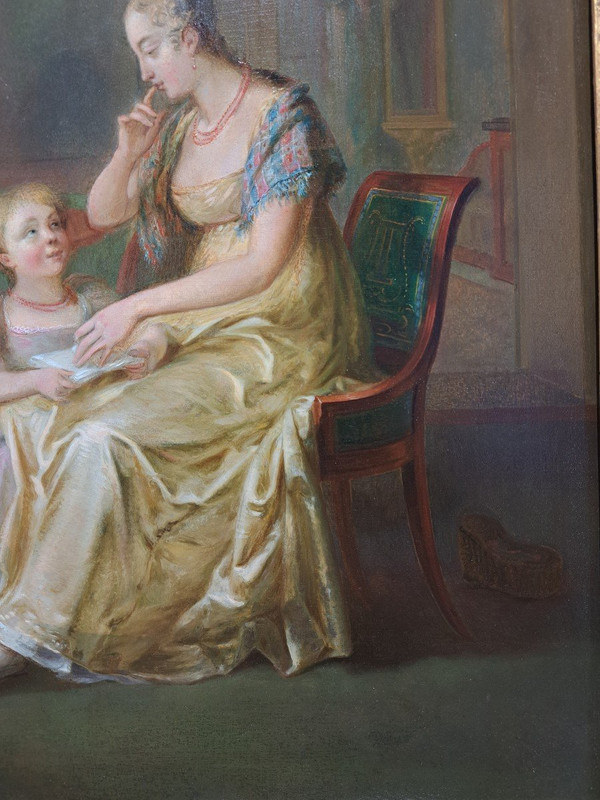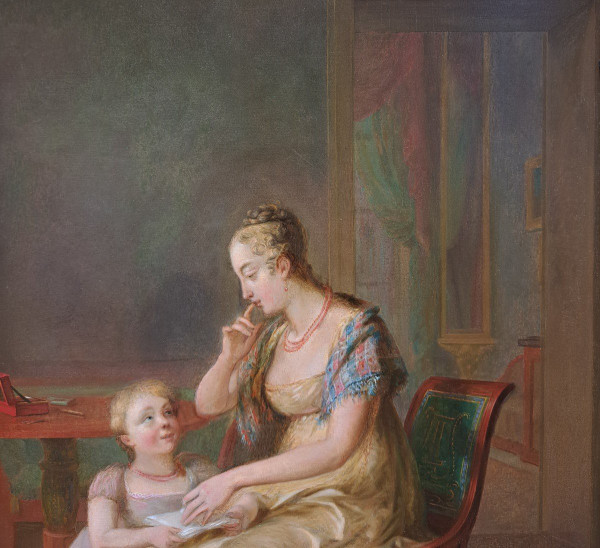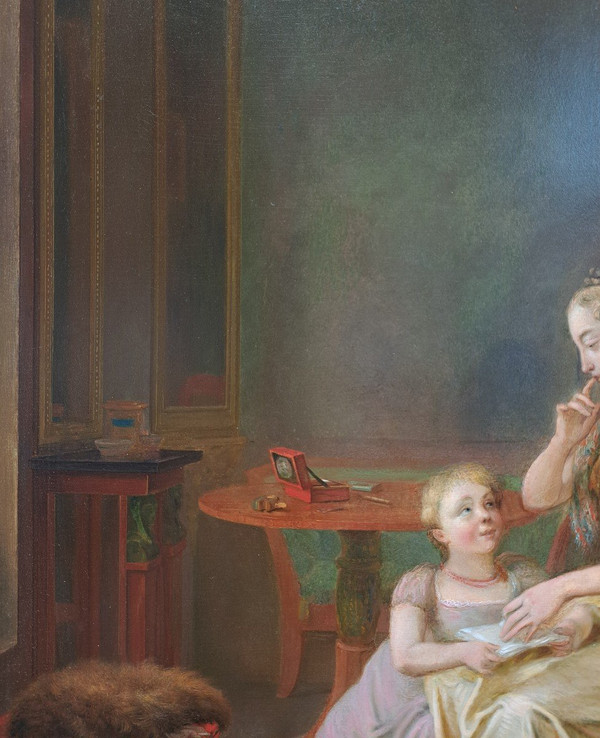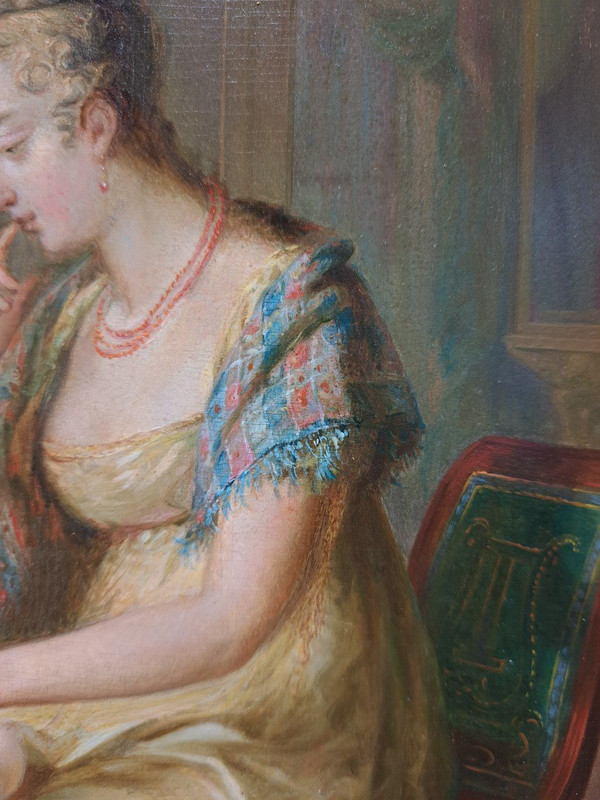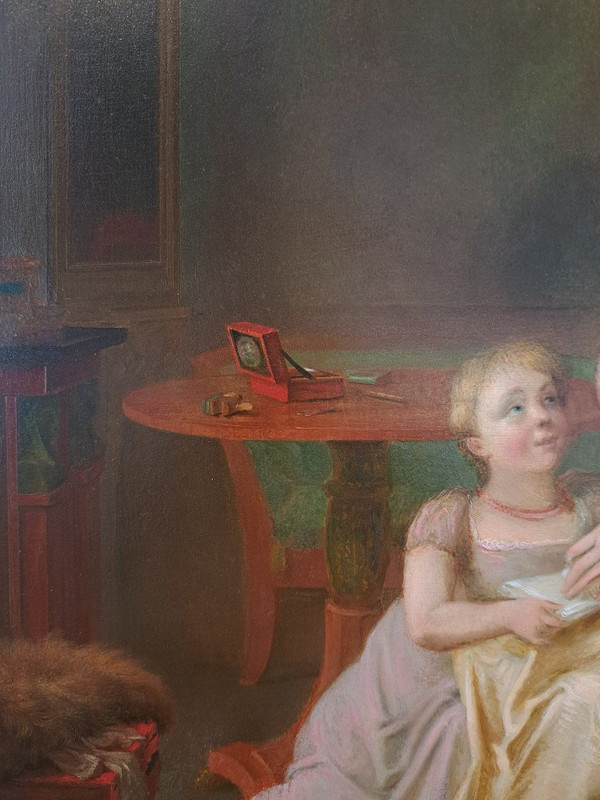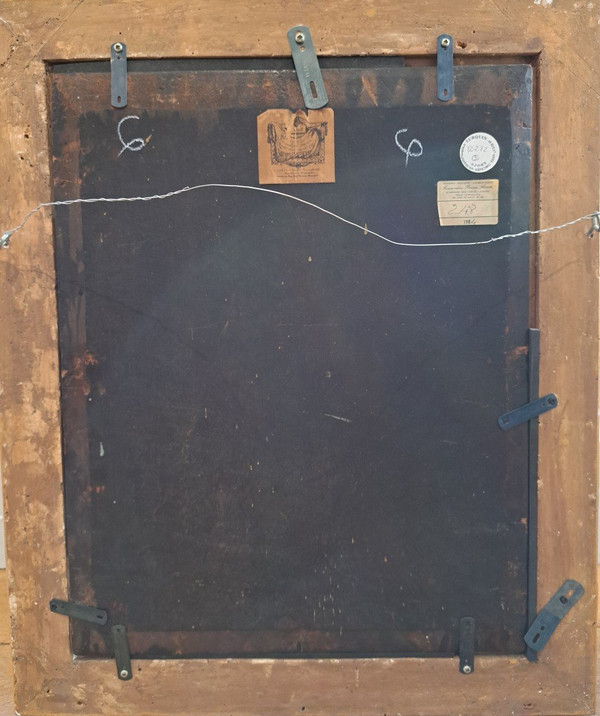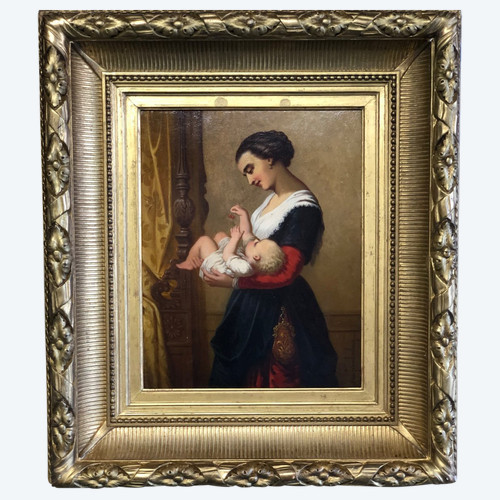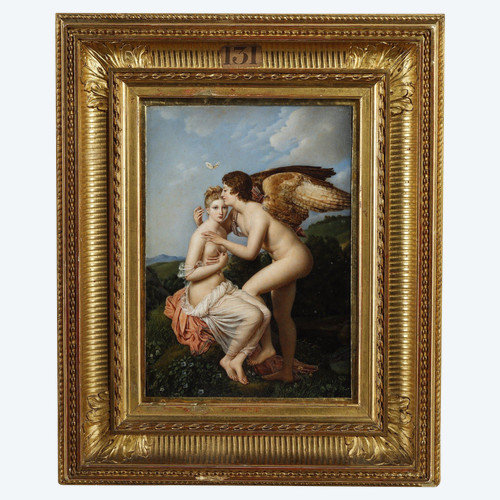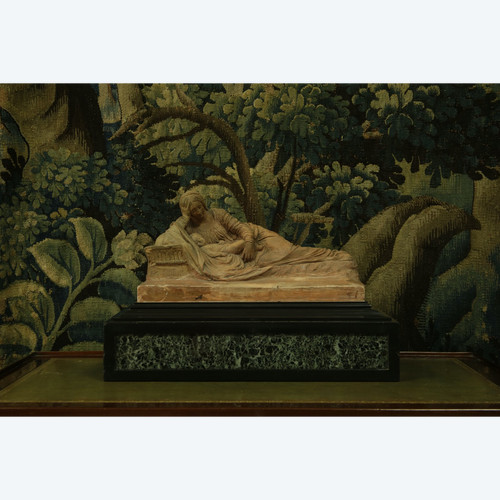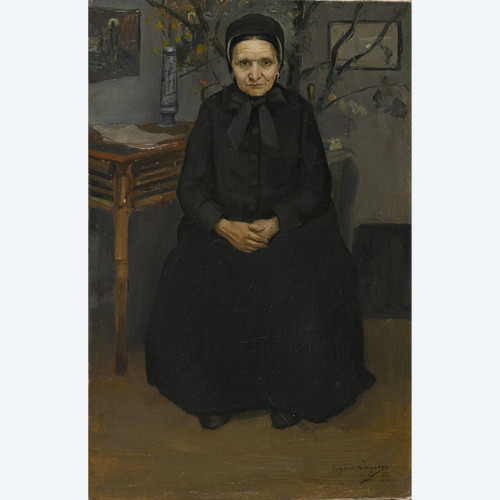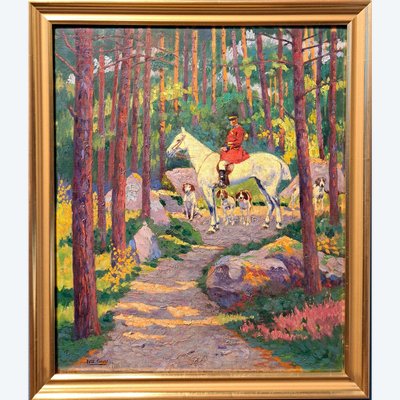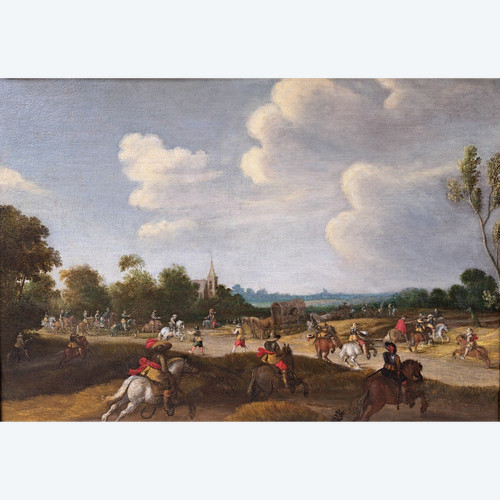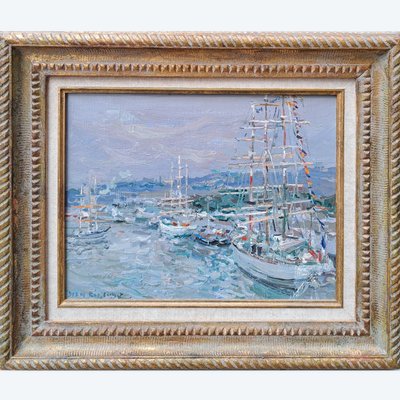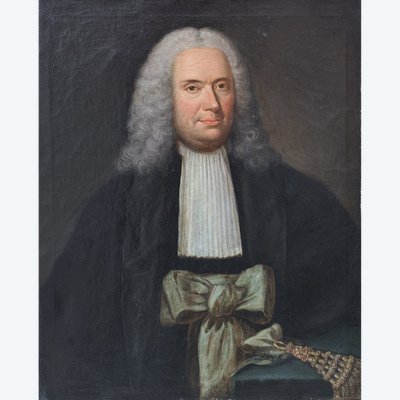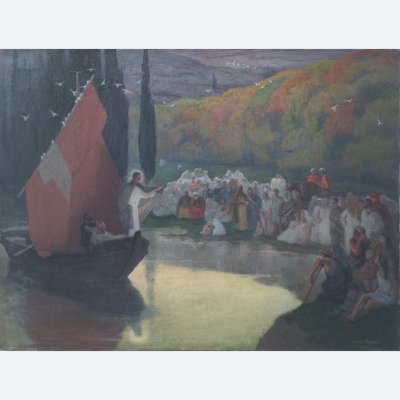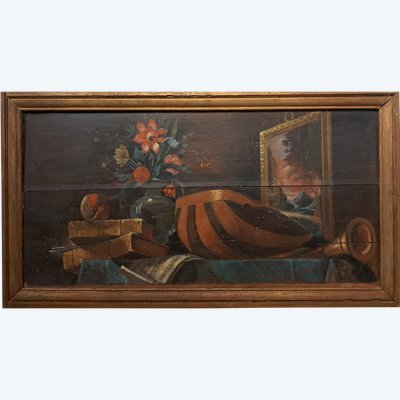This description has been translated and may not be completely accurate. Click here to see the original
Jean Augustin Franquelin (1798-1839)
Maternal Tenderness
Oil on panel signed on the curule stool
Size: 51 x 40 cm
Period wood and gilded stucco frame
Provenance :
Perrin - Royere - Lajeunesse auction in Versailles in 1984
The painter offers us a fine illustration of a typical early 19th-century interior, depicting a moment of intimacy between a mother and daughter. The child is holding some leaves, perhaps being read to by her mother. The gentle, attentive gaze of the child leaning against her mother, who is delicately bringing her index finger to her mouth, testifies to this mutual tenderness. The clothes, the shawl, the coral ornaments, the fur, the furniture and the decorative objects prove that we are in a beautiful bourgeois interior.
This theme of maternal tenderness appeared in the mid-18th century, during a period of infatuation with "nature" and philosophical questioning about society and education. In his Emile, Rousseau placed the child's sensitive experience at the heart of his thinking. Emotion, hitherto concealed, became more present throughout society. Scenes of breast-feeding were to appear in paintings, in stark contrast to society, where children were placed in the care of wet-nurses. An idea that even touched Queen Marie Antoinette, who confessed to a daily closeness with her children that contradicted etiquette. Our painting is the culmination of this social evolution.
Biography :
Jean-Augustin Franquelin was born in Paris on September 1, 1798, into a family of modest means. At an early age, he joined Regnault's studio, and after a few years of hard work, entered the Prix de Rome. Early on, he produced large-scale works that he sent to the Salon, where he exhibited from 1819 to 1839. He was awarded a second-class gold medal in 1827. It was only around 1824 that the artist began to produce easel paintings, which he produced in large numbers and became renowned for their remarkable compositions, firmness and drawing.
Sadly, he died prematurely at the age of 41.
His works can be found in museums such as the Louvre, Grenoble, the Musée de Brou...
Ref: EAVU3XR5BF
 Louis XV Style Firewall Or Screen
900 € EUR
Louis XV Style Firewall Or Screen
900 € EUR

